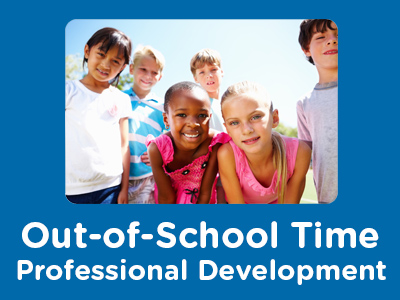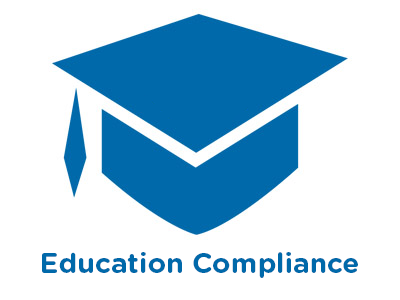 |
Business Accounting: Stockholders' Equity |
1.50 |
This course will cover how to identify various types of stocks and calculate the value of a corporation’s stock as well as how to use financial ratios to calculate book value and market value per share. You will also learn how to identify the components of stockholders’ equity and report stockholders’ equity on financial statements. |
 |
Construction Safety & Prevention Program: Incident Investigation Procedure |
0.50 |
Incident Investigation Procedure is part of a twelve-part construction safety and prevention program. This course covers the purpose of incident investigation, the approaches to investigating an incident, how to establish an incident investigation program, and more. |
 |
Advanced Interpersonal Communication: Organizational Culture |
1.34 |
An organizational culture is the personality of an organization. This personality is both determined and accepted by the organization’s members. For example, an organization might have a culture that is youthful, energetic, and fast-paced. In this type of culture, decisions are made quickly, and employees are empowered to take action in a wide variety of situations. Another organization might be more straight-laced and policy-oriented. This organization would be much more formal and serious in the way it does business. It is important to recognize and understand the culture of an organization, so that you can determine your fit with the organization.
In this course you will learn: to determine the nature of an organization’s culture, to use the cultural network to your advantage, and identify the characteristics of the roles exhibited in the network, to identify the elements of physical culture that affect interpersonal communication, and to identify the ways in which managers can build a positive culture. |
 |
Exploring Four Areas of School-Age Development: Physical Development |
0.50 |
One of the most helpful ways to gain an understanding of the needs and interests of youth between 5 and 12 is to examine their development from four different perspectives: 1) Physical Development, 2) Cognitive Development, 3) Social Development, and 4) Emotional Development. In this course, we will explore the physical development perspective. |
 |
Call Center Management: Managing for Excellent Service |
1.00 |
This course will cover how to set service levels, achieve service levels, and use reports. |
 |
E-Mail Etiquette: E-Mail Messages |
0.50 |
In this course, you will learn how to take advantage of the headers in e-mail messages. You will learn about the “To” field, in which you should type the recipient’s e-mail address. You will also learn when to send carbon copies and blind carbon copies of messages. You will learn the importance of writing a proper subject field for e-mail messages and that the header also includes the date and time of sending messages. Finally, you will learn how to construct the body of an e-mail message, add a personal touch to your messages by including a proper greeting, relay information by placing it in the appropriate order, and use different types of lists effectively. You learned the correct way to write long e-mail messages to keep recipients interested in the information and how to effectively close e-mail messages. |
 |
Safe Infant Sleep: SIDS and the Safe Infant Sleep Position |
1.00 |
This course is focused on the American Academy of Pediatrics’ best practice recommendations for reducing the risk of Sudden Infant Death Syndrome (SIDS) and Sudden Unexpected Infant Death (SUID) and for promoting safe sleep in infant care settings.
Course Learning Objectives:
Define Sudden Infant Death Syndrome (SIDS) and Sudden Unexpected Infant Death (SUID), and their relationship to safe infant sleep in infant care settings.
Identify safe infant sleep position and safe sleep environments. |
 |
Business Finance: Portfolio Risk |
0.75 |
This course will focus on how to use the diversification principle to invest in portfolios as well as how to use the Capital Asset Pricing Model. You will also learn how to calculate different types of financial ratios. |
 |
School-Age Care as a Family Service: Emphasis on Planning Opportunities for Family Involvement |
2.00 |
The foundation for getting parents involved in school-age programs is to keep parents well informed about what is happening in the program. Quality programs also provide parents with opportunities to make suggestions and give feedback on program services through suggestion boxes, feedback forms, and surveys. When parents are encouraged to have input in the program, they develop trust and confidence in the program, and feel a sense of pride and ownership. They are more likely to participate as resourceful partners with program staff when they know their ideas are welcome and valued. Finally, because parents are all different from each other, it's important to provide many different opportunities for them to connect with the program. Staff in quality school-age programs recognize that all parents don't have to be involved in the same way. |
 |
Koalas |
1.00 |
This course provides an introduction to koalas, including an overview of physical characteristics, habitat, behavior, reproduction, and conservation. |
 |
Overview of Enforcement for Occupational Exposure to Tuberculosis (TB) |
0.50 |
This course covers a brief overview of OSHA’s enforcement policy for occupational exposure to tuberculosis. OSHA’s tuberculosis policy is found in CPL 02-00-106 – CPL 2.106 – Enforcement Procedures and Scheduling for Occupational Exposure to Tuberculosis. |
 |
Change Management: Obstacles to Change |
0.75 |
This course will cover how to identify the causes of resistance and the negative reactions to change and the methods for managing them. You will also learn how to identify the causes of complacency and prepare for crisis. |
 |
Managing Performance: Legal Appraisals |
0.84 |
In this course you will learn to: identify legal appraisals and responsibilities in relation to laws enforced by the EEOC, and identify risks of legal challenges and the importance of maintaining positive communication. |
 |
Customer Service: Customer Service Skills |
1.00 |
A great customer service representative should have skills in three key areas: organization (time and stress management), motivation (letting customers know you care), and communication (vocal, verbal, and visual). The core strength of a good customer service rep is sound knowledge of the organization’s products and services. |
 |
Creativity and Innovation: Personal Creativity |
1.34 |
Creativity is often considered a talent that some people have. Actually, creativity's a skill that everyone can nurture through exercise and practice. You can prepare yourself both mentally and physically to be creative.
In this course you will learn to: prepare yourself mentally and physically to be creative, and use your experiences, innocence, intuition, and sense of adventure to increase your creativity. |
 |
Expedition Ocean: Module 1 Teacher Version |
1.00 |
|
 |
A Student Guide to Fire Safety |
0.50 |
Between January 2000 and May 2015, 85 fatal fires in dorms, fraternities, sororities, and off-campus housing took the lives of 118 people. This course offers students a refresher about fire safety, including the main causes of campus fires, the actions students can take to prevent fires, and the importance of working smoke alarms and knowing two ways out.
|
 |
Connection Planning in Long-Term Care |
1.00 |
This module includes training for staff and providers in the importance of social connection and practical strategies learners can use to promote social connectedness in long-term care. The module explains how to implement Connection Planning, a brief, person-centered behavioral intervention for developing resident care plans that address social connection. Connection Planning includes evidence-informed, practical strategies to promote meaningful social connection among residents in long-term care. |
 |
Business Writing: Formal Proposals |
0.75 |
This course will cover how to create a formal proposal. You will also learn how to add visual elements to a formal proposal, and edit a proposal. |
 |
Engaging Middle School Youth in College & Career Readiness |
1.00 |
This course will introduce participants to the College & Career Readiness Toolkit, developed by the Maryland Out-of-School Time (MOST) Network, as well as developmentally appropriate activities and considerations for implementing college & career readiness with middle school youth in an out-of-school time setting. |
 |
GED: Social Studies - Unit 5: Post-Test |
0.25 |
Welcome to Unit 5: Post-Test. This post-test covers civics and government, US history, economics, and world geography. At the end of this post-test is a table that matches each test question to the content it covers. Use it to review and content you haven't mastered. |
 |
Effective Communication with Children and Youth |
2.00 |
We are constantly communicating with the children and youth in our program through our words and actions. It's important for program staff to think critically about their communication skills and habits in order to communicate effectively. During this course, participants will learn about effective and dynamic communication tools, strategies to check for understanding, and activities that engage children and youth in communication. |
 |
Quality Management: The Costs Of Quality |
0.50 |
Before the quality revolution that began in the United States in the 1980s, quality was frequently viewed as a goal that came at a higher price for production. However, the reality is that poor quality is a result of the ineffective use of resources, including wasted material and labor. Therefore, improved quality means better use of resources and lower costs.
In this course you will learn to: identify the relationship between quality and cost, the benefits of establishing quality requirements, management’s responsibilities for achieving conformance, and the costs of customer dissatisfaction. |
 |
Sanitation and Hygiene |
0.25 |
This course covers the proper manufacturing practices to ensure good sanitation, how to achieve proper hygiene among personnel, and how to identify sanitation and health problems in the workplace. |
 |
Budgeting: Reviewing Budgets |
1.00 |
A typical budget contains information for a single year and is updated and revised periodically. Each company creates a budget that fits its unique needs. A budget can be used for many purposes, but its primary functions should be to support strategic goals and to help identify when actual results deviate from what was predicted. |


























